Footage captured by a camera mounted on a humpback whale shows a bottlenose dolphin following the whale. The two species are swimming comfortably close together, which is considered rare - Video : Olaf Meynecke
Not only do dolphins and whales conquer humans with their intelligence and strange behaviors, they also surprise scientists with their rare friendly relationship.
New research from Griffith University (Australia), published in the journal Discover Animals , reveals that these two species not only acknowledge each other's presence but also actively interact, even diving to the bottom of the sea together.
Dolphins and whales: from chance encounters to close friendships
It is not uncommon to see dolphins and whales together. Beachgoers and nature photographers sometimes capture the moment when the two species swim together on the surface of the water, creating a picturesque scene. But the question that has puzzled researchers for many years is: is this just a "chance encounter" or is there a real social relationship between them?
"As a researcher, whenever I see dolphins and whales together, I always wonder: why? Is this a game, a hunting strategy or just a common movement habit?", said Olivia Crawley, a PhD student at Griffith University.
To find out, Crawley and his colleague Olaf Meynecke collected and analyzed hundreds of videos and images from projects observing baleen whales and dolphins. The team focused on whales' reactions to dolphins approaching, a behavior often considered "teasing."
The results showed that, rather than avoiding or showing discomfort, many whales responded positively: swimming alongside, turning their bellies, or actively moving closer to the dolphins. This suggests a two-way social relationship, rather than a one-sided one.
Dive to the bottom of the ocean together
A striking discovery came from two videos taken with a suction device attached to the back of a humpback whale (Megaptera novaeangliae). In both cases, bottlenose dolphins (Tursiops truncatus) not only swam with the whales on the surface, but also followed them on deep dives, sometimes to the bottom. In this dark, high-pressure environment, the dolphins remained close, moving gracefully around the whales’ massive bodies.
According to statistics, the research team recorded 425 whales of 6 different species, with humpback whales accounting for 68% of the observations. On the dolphin side, bottlenose dolphins were the most common, in addition to striped dolphins, spinner dolphins and some less common species.
"We found that about 25% of whale-dolphin encounters involved a clear back-and-forth interaction. With humpback whales, this figure increased to about a third. Behaviors such as rolling, belly-up displays or slow swimming towards dolphins can be friendly or even social signals," says Olaf Meynecke.
In the human world , shaking hands, hugging, or smiling can convey goodwill. In dolphins and whales, body language involves rolling, pressing in, or swimming alongside. Each whale species has its own “style”: gray whales like to roll, southern right whales often use their fins to thrash the water. Interestingly, negative anger behaviors such as tail-swinging or head-banging are rare.
Scientists believe the relationship could be beneficial for both species. Dolphins are known for their intelligence and agility, while whales are known for their size and strength. The companionship could help them spot predators earlier or help each other find food.

In the vast world of the ocean, dolphins and whales are sometimes not just accidental "neighbors", but can be companions, sharing joy on every wave - Photo: Wildlive Media
Significance to science and conservation
In nature, it is not always easy for two different species to form friendly relationships. However, dolphins and whales have shown that even in the vast ocean, where the laws of survival are sometimes harsh, there are moments of tenderness. They swim together, play together, and even share the journey to the bottom of the sea as true friends.
This discovery not only enriches human understanding of the underwater world, but also reminds us that nature always contains unexpected connections, far beyond the limits we imagine.
Griffith University’s research not only provides fascinating images of wildlife, but also has practical value. Understanding how dolphins and whales interact helps scientists identify their social structure and behavior, thereby proposing appropriate conservation measures.
“Behavioral studies like this help us get a more holistic view of marine ecosystems,” Meynecke stressed. “When we understand how closely related species are, we understand that conserving a species also means protecting its natural connections.”
This discovery also raises many scientific questions: Are dolphin-whale friendships formed out of survival, curiosity, or simply pleasure? Are there differences in the way populations in different ocean regions interact? These will be the next research directions that Griffith's team wants to explore.
From the initial footage and images, scientists have had a new look at the relationship between the two most intelligent species in the ocean. Although the real cause of these behaviors is still an open question, one thing is certain: in the vast world of the ocean, dolphins and whales are sometimes not just "neighbors" by chance, but can be companions, sharing joy on every wave.
Source: https://tuoitre.vn/bat-ngo-phat-hien-ca-heo-va-ca-voi-lam-quen-choi-voi-nhau-nhu-ban-20250812144806255.htm


![[Photo] Solemn opening of the 8th Congress of the Central Public Security Party Committee, term 2025-2030](https://vphoto.vietnam.vn/thumb/1200x675/vietnam/resource/IMAGE/2025/10/4/f3b00fb779f44979809441a4dac5c7df)

![[Photo] General Secretary To Lam attends the 8th Congress of the Central Public Security Party Committee](https://vphoto.vietnam.vn/thumb/1200x675/vietnam/resource/IMAGE/2025/10/4/79fadf490f674dc483794f2d955f6045)


![[Photo] Bustling Mid-Autumn Festival at the Museum of Ethnology](https://vphoto.vietnam.vn/thumb/1200x675/vietnam/resource/IMAGE/2025/10/4/da8d5927734d4ca58e3eced14bc435a3)



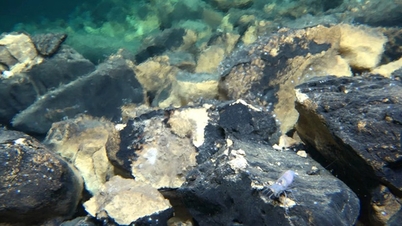


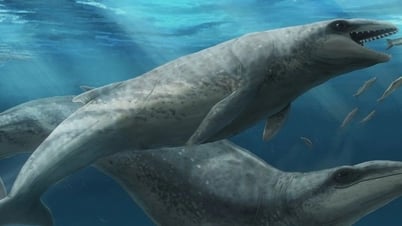
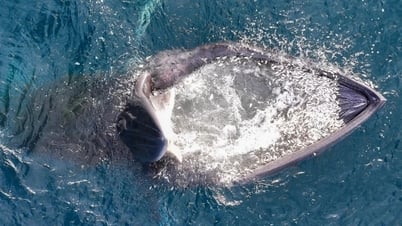


















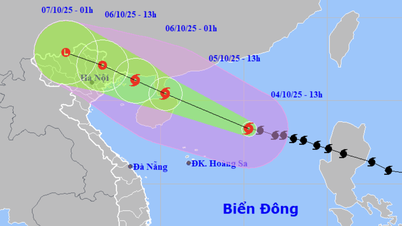

![[Infographic] Notable numbers after 3 months of "reorganizing the country"](https://vphoto.vietnam.vn/thumb/1200x675/vietnam/resource/IMAGE/2025/10/4/ce8bb72c722348e09e942d04f0dd9729)






















![[VIDEO] Summary of Petrovietnam's 50th Anniversary Ceremony](https://vphoto.vietnam.vn/thumb/402x226/vietnam/resource/IMAGE/2025/10/4/abe133bdb8114793a16d4fe3e5bd0f12)
![[VIDEO] GENERAL SECRETARY TO LAM AWARDS PETROVIETNAM 8 GOLDEN WORDS: "PIONEER - EXCELLENT - SUSTAINABLE - GLOBAL"](https://vphoto.vietnam.vn/thumb/402x226/vietnam/resource/IMAGE/2025/7/23/c2fdb48863e846cfa9fb8e6ea9cf44e7)




















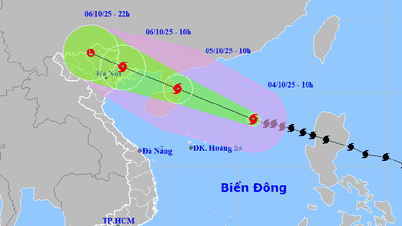












Comment (0)